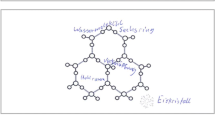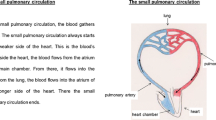Abstract
Scientific texts are often multimodal, consisting of both text and illustrations. However, previous research indicates that young readers are poor at using text-and-illustration integration strategies and at in-depth processing of scientific illustration information. This study used an experimental paradigm to teach strategies of illustration reading and text-and-illustration integration to fourth-grade students. The study manipulated reading ability (high vs. low level) and teaching strategy (presence vs. absence of reading strategies instruction) as between-subjects variables. Seventy-one participants completed a prior-knowledge test, read two illustrated biology texts, and answered comprehension questions. The results showed that the instructed groups outperformed the control groups on the overall reading test, and in the illustration memory and integration items. It was inspiring to discover that teaching fourth-grade students of both high and low reading ability levels to pay attention to scientific illustrations, process them in-depth, and consider the relationship between textual descriptions and detailed parts of illustrations benefited these young readers in reading comprehension and acquiring scientific knowledge.

Similar content being viewed by others
References
Ainsworth, S. (2006). DeFT: a conceptual framework for considering learning with multiple representations. Learning and Instruction, 16, 183–198.
Anderson, C. W. (1999). Inscriptions and science learning. Journal of Research in Science Teaching, 36, 973–974.
Baddeley, A. (1992). Is working memory working? The fifteenth Bartlett lecture. Quarterly Journal of Experimental Psychology, 44, 1–31.
Carney, R. N., & Levin, J. R. (2002). Pictorial illustrations still improve students’ learning from text. Educational Psychology Review, 14(1), 5–26.
Cervetti, G. N., Barber, J., Dorph, R., Pearson, P. D., & Goldschmidt, P. G. (2012). The impact of an integrated approach to science and literacy in elementary school classrooms. Journal of Research in Science Teaching, 49(5), 631–658.
Chall, J. S. (1983). Stages of reading development. New York: McGraw-Hill.
Chandler, P., & Sweller, J. (1991). Cognitive load theory and the format of instruction. Cognition and Instruction, 8(4), 293–332.
Chi, M. T. H., Feltovich, P. J., & Glaser, R. (1981). Categorization and representation of physics problems by experts and novices. Cognitive Science, 5(2), 121–152.
Collins, B. C., & Pressley, M. (2002). Comprehension instruction: research-based best practices. New York: Guilford.
Friel, S. N., Curcio, F. R., & Bright, G. W. (2001). Making Sense of Graphs: Critical Factors Influencing Comprehension and Instructional Implications. Journal for Research in Mathematics Education, 32(2), 124.
Gerber, R., Boulton-Lewis, G., & Bruce, C. (1995). Children’s understanding of graphic representations of quantitative data. Learning and Instruction, 5(1), 77–100.
Halliday, M. (1994). An introduction to functional grammar (Second ed.). London: Edward Arnold.
Hannus, M., & Hyönä, J. (1999). Utilization of illustrations during learning of science textbook passages among low- and high-ability children. Contemporary Educational Psychology, 24, 95–123.
Hegarty, M. (1992). Mental animation: inferring motion from static displays of mechanical systems. Journal of Experimental Psychology: Learning, Memory, & Cognition, 18, 1084–1102.
Huang, H. B. (2013). Living science and technology textbook. Nani Company Press.
Jarman, R., & McClune, B. (2000). Newspapers in the secondary science classroom: a survey of practice in Northern Ireland schools. Paper presented at the National Association for Research in Science Teaching Annual Meeting, New Orleans, LA.
Jewitt, C., & Oyama, R. (2001). Visual meaning: a social semiotic approach. In T. van Leeuwen & C. Jewitt (Eds.), Handbook of visual analysis (pp. 134–156). London: Sage.
Jian, Y. C. (2016). Fourth graders’ cognitive processes and learning strategies for reading illustrated biology texts: eye movement measurements. Reading Research Quarterly, 51(1), 93-109.
Jian, Y. C. (2018). Reading instructions facilitate signaling effect on science text for young readers: an eye-movement study. International Journal of Science and Mathematics Education (in press).
Jian, Y. C., & Wu, C. J. (2015). Using eye tracking to investigate semantic and spatial representations of scientific diagrams during text-diagram integration. Journal of Science Education and Technology, 24(1),43–55.
Jian, Y. C. & Ko, H. W. (2017). Influences of text difficulty and reading ability on learning illustrated science texts for children: An eye movement study. Computers and Education, 113, 263-279.
Ko, H. W. (2006). Reading comprehension screening test (in Chinese). Psychological Testing, 46, 1–11.
Koć-Januchta, M., Höffler, T., Thoma, G., & Prechtl, H. (2017). Visualizers versus verbalizers: effects of cognitive style on learning with texts and pictures—an eye-tracking study. Computers in Human Behavior, 68, 170–179.
Kress, G., & van Leeuwen, T. (1996). Reading images: the grammar of the visual design. London and New York: Routledge.
Mayer, R. E. (2005). Cognitive theory of multimedia learning. In R. E. Mayer (Ed.), Cambridge handbook of multimedia learning (pp. 31–48). New York: Cambridge University Press.
Moore, P. J., & Scevak, J. J. (1997). Learning from texts and visual aids: a developmental perspective. Journal of Research in Reading, 20, 205–223.
National Research Council. (2014). Literacy for science: exploring the intersection of the next generation science standards and common core for ELA Standards, a workshop summary, H. Rhodes and M.A. Feder, Rapporteurs. Steering Committee on Exploring the Overlap between “Literacy in Science” and the Practice of Obtaining, Evaluating, and Communicating Information. Board on Science Education, Division of Behavioral and Social Sciences and Education. Washington, DC: The National Academies Press.
Norman, R. R. (2012). Reading the graphics: what is the relationship between graphical reading processes and student comprehension? Reading and Writing, 25, 739–774.
Norris, S. P., & Phillips, L. M. (2003). How literacy in its fundamental sense is central to scientific literacy. Science Education, 87(2), 224–240.
Ødegaard, M., Haug, B., Mork, S. M., & Sørvik, G. O. (2014). Challenges and support when teaching science through an integrated inquiry and literacy approach. International Journal of Science Education, 36(18), 2997–3032.
Paivio, A. (1990). Dual coding theory. In A. Paivio (Ed.), Mental representations: a dual coding approach (pp. 53–83). New York: Oxford University Press.
Pozzer, L. L., & Roth, W. M. (2003). Prevalence, function, and structure of photographs in highschool biology textbooks. Journal of Research in Science Teaching, 40(10), 1089–1114.
Schnotz, W. (2005). An integrated model of text and picture comprehension. In R. E. Mayer (Ed.), Cambridge handbook of multimedia learning (pp. 49-69). New York: Cambridge University Press.
Sweller, J., van Merriënboer, J. J. G., & Paas, F. G. W. C. (1998). Cognitive architecture and instructional design. Educational Psychology Review, 10, 251–296.
Unsworth, L. (2001). Teaching multiliteracies across the curriculum: changing contexts of text and image in classroom practice. Buckingham: Open University Press.
Wellington, J., & Osborne, J. (2001). Language and literacy in science education. Buckingham: Open University Press.
Funding
This research is supported by the grants MOST105-2628-H-003-002-MY3 and MOST107-2636-S-003-001 from the Ministry of Science and Technology in Taiwan.
Author information
Authors and Affiliations
Corresponding author
Rights and permissions
About this article
Cite this article
Jian, YC. Teaching Fourth-Grade Students of Different Reading Abilities to Read Biological Illustrations and Integrate In-Text Information: an Empirical Experiment. Res Sci Educ 50, 2269–2282 (2020). https://doi.org/10.1007/s11165-018-9778-8
Published:
Issue Date:
DOI: https://doi.org/10.1007/s11165-018-9778-8




